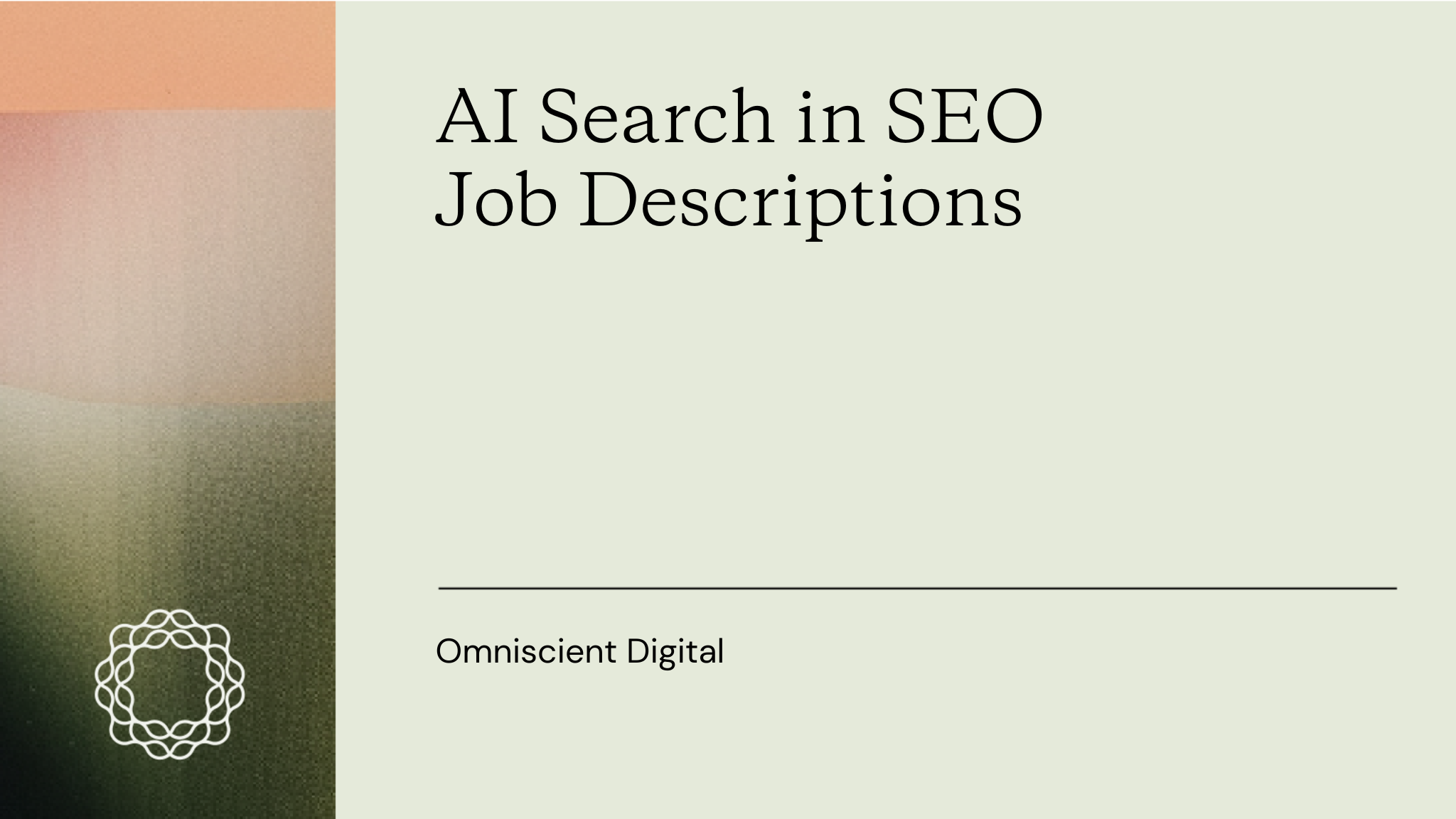
The rise of AI in search isn’t just changing how people find information, it’s reshaping the skills companies expect from SEO professionals.
As more teams realize they need to track AI visibility, measure brand mentions inside LLMs, and understand how AI Overviews surface content, they’re also recognizing a truth: none of that is possible without the right structures in place. That means new tooling, new measurement frameworks, and critically, people who actually know how to do this work.
To understand how teams are building these skills internally and how role expectations are evolving, I analyzed how SEO job descriptions are changing.
For a quick look at what I found, download the PDF.
Methodology
I scraped roughly 30,000 job postings in North America from LinkedIn using a wide set of SEO-related job titles, though not all results were true SEO roles. After removing duplicates and filtering out unrelated listings, I isolated a final set of 643 unique SEO job postings for detailed analysis.
To ensure balanced coverage, the scrape pulled evenly across 132 target job titles:
- Executives (Director level and above, 38)
- Managers (39)
- Individual Contributors (41)
And across:
- Traditional SEO roles (45)
- AI-focused SEO roles (44)
- Hybrid SEO roles (Technical SEO and Engineering, 43)
Results
Over one third of all SEO job descriptions now include AI search skills.

AI search is influencing SEO early in the loop, right at the hiring stage. It’s reshaping job descriptions and even job titles themselves.
We actually expected the opposite ratio of SEO-only roles to AI-search roles, given how many teams say they want to implement GEO moving forward. The data suggests that hiring for these skills is lagging behind organizational curiosity and early experimentation.
AI Visibility Tools Mentioned:

Only 22 listings referenced specific tools by name, with Profound being the most commonly mentioned.
This likely reflects how most teams are still in the early stages of adopting AI visibility tools. Many organizations haven’t committed to a single tool, or are still actively experimenting. If the organization is still figuring out its own tooling, it makes sense that job descriptions wouldn’t expect new hires to come in already trained on a specific platform.
AI search requirements are more popular in senior roles.
By seniority, AI search skills are mentioned in:
- 50% of Executive Roles (Director and above)
- 41% of Manager Roles
- 29% of Individual Contributor Roles
This suggests that GEO and AI search strategy decisions must first be established at the leadership level before becoming expectations for ICs. Teams need a strategic foundation before operationalizing these skills in entry-level positions.
Which are the most common terms and phrases in AI Search job descriptions?

GEO and AEO have moved beyond buzzwords and now appear consistently across SEO job descriptions. These frameworks are becoming standard expectations in modern search roles.
Companies are now hiring to optimize for AI Overviews, not just “AI Search” as a general concept. This signals that organizations treat AI Overviews as a distinct channel with its own strategy and skills, separate from broader LLM visibility.
Which term is the industry coining?

GEO wins the terminology war so far, with AEO not far behind, suggesting that the industry is converging around these two labels as the primary ways to describe AI-driven search optimization.
TL;DR
34% of SEO roles now require AI search skills, and 6% of all SEO roles I scraped use entirely new titles like SEO & GEO Specialist and Director of AEO & SEO.
As organizations begin treating AI visibility as its own channel, they’re realizing that success requires far more than dabbling in LLM prompts. It demands real infrastructure: systems that can track where and how brands appear in AI-generated responses, frameworks for measuring visibility across models, and teams with the skills to interpret and influence these outputs.


